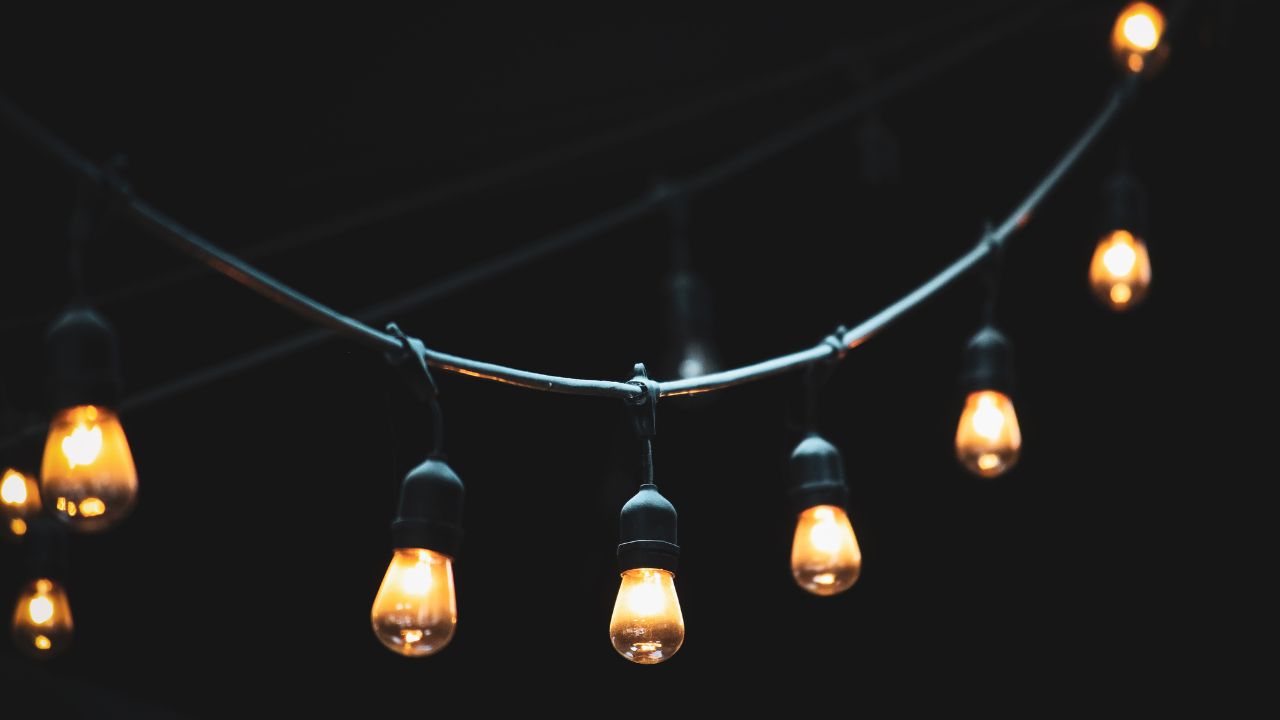Outdoor lights rarely get fanfare, yet the moment they fail, everyone notices. One flick of a switch and—nothing. Now the dark corner by the shed feels like the first scene of a suspense movie. Reliable lighting fixes that, boosts curb appeal, and can even shave dollars off your power bill. In Mandurah, where sea air meets warm evenings, a smart lighting plan turns backyards into nighttime living rooms and keeps walkways safe for the late-night dash to the bins.
Below, you’ll find a direct, no-fluff guide to choosing and installing lights that handle coastal weather, satisfy local regulations, and still look good on Instagram. Every tip comes with one core reminder: when mains power is involved, a licensed electrician in Mandurah, WA, should be your first call.
Why Upgrade Now?
Bad lighting quietly costs you money and comfort. Dim halogens soak up electricity, old fittings corrode in salty air, and patchy shadows invite stubbed toes. A well-planned upgrade changes that story:
- Safety all night—Bright, even illumination on stairs, paths, and driveways keeps every step predictable.
- A welcome glow—Soft accent lights pick out trees, flower beds, and outdoor seating, turning the yard into a second lounge.
- Security without drama—Motion-sensor floodlights startle intruders and make security cameras work better.
- Lower bills—Modern LEDs sip power and last for years, so you save on both energy and replacement bulbs.
Deck and Patio Lighting That Earns Compliments
Your deck hosts everything from Sunday breakfasts to birthday dinners. The right lights create mood without blinding your guests or leaving burger buns in the dark.
Recessed step lights
Small fixtures set into risers guide feet up and down. Choose stainless steel housings rated at least IP65 so rain and sand don’t ruin them.
Wall sconces
Mounted on brick or timber posts, sconces spill warm light across seating areas. Add a dimmer switch for late-night chats when a soft glow feels friendlier than a spotlight.
Under-rail LED strips
Hidden strips under handrails or benches cast a gentle wash downward. They deliver style points while keeping wiring out of sight and away from playful kids.
Overhead festoon strings
Café-style bulbs strung between beams or posts shout “relaxed gathering” without much effort. Just plug them into weatherproof outlets protected by a Residual Current Device (RCD), something your electrician will install by default.
Quick design tip: keep color temperatures consistent in one zone. Mixing cool white and warm white can make the space feel disjointed, like two parties happening at once.
Garden and Landscape Lighting for Nighttime Wow
A well-lit garden looks like a living painting. The trick is layering light instead of flooding everything with a single bright beam.
Path lights
Low posts every couple of meters gently mark walkways. Warm white LEDs (around 3000 K) feel inviting and avoid the clinical vibe of cooler tones.
Spike spotlights
Adjustable spikes tucked into garden beds aim tight beams at feature trees, statues, or water features. Angle two or three lights at tall palms so foliage pops without harsh shadows.
In-ground uplights
Fixtures installed flush with the lawn show off trunks or architectural columns. Go for marine-grade stainless steel; cheaper aluminum often pits in Mandurah’s salty breeze.
Bollard lights
Taller than path stakes, bollards guard driveways or wide entries. Louvers or frosted lenses keep glare low so neighbors don’t feel like they’re in a stadium.
Solar or wired?
Solar stakes are great for rentals or quick accents but fade on cloudy winter days. Hard-wired low-voltage systems stay bright no matter the forecast and can run on timers or smart controllers. Burying cable safely calls for an electrician in Mandurah, WA, who knows how deep to dig and how to avoid irrigation lines.
Security Lighting without Turning Your Home into a Runway
Light is one of the easiest deterrents against unwanted visitors. The goal is smart coverage, not lighting up the entire suburb.
Motion-sensor floods
Install LED floodlights three meters above ground, angled just thirty degrees downward. Too low and pets trigger them; too high and faces disappear in shadows. Most units let you adjust sensitivity so swaying shrubs don’t set them off.
Dusk-to-dawn fixtures
Photocells handle the schedule automatically. Perfect for recycling areas or side yards where you always need a glow but don’t want to think about flipping a switch.
Wi-Fi-enabled lights
Pair smart fittings with your phone to create custom schedules, integrate cameras, or receive alerts when lights activate. Verify your router reaches the mounting point; double brick walls can kill the signal faster than you can say “buffering.”
Local etiquette matters. Mandurah council discourages excessive glare spilling onto streets or neighboring yards. Hooded fixtures and lower-lumen bulbs keep light focused where you need it—on your own property.
LEDs: The Clear Choice
Halogens once ruled the patio, but LEDs now outshine them in every practical way.
- Tiny appetite for power—An 8-watt LED can equal a 60-watt incandescent. Multiply that saving across ten fixtures and your quarterly bill thanks you.
- Long life—Expect 25,000 to 50,000 hours. That’s roughly a decade of nightly use before you even think about a ladder.
- Cool to touch—Less heat means lower fire risk under timber eaves and fewer bugs swarming around searing bulbs.
- Color and control—LEDs come in shades from warm candlelight to crisp daylight and work beautifully with dimmers, motion sensors, and smart hubs.
Choose consistent color temperatures outdoors just as you would indoors. Warm white for cozy seating, neutral white for paths, and daylight white only where high visibility is critical.
The Rules You Really Can’t Ignore
Electrical work under Western Australian law is clear: anything beyond changing a light bulb must be done by a licensed contractor. The reasons are equal parts safety and insurance.
RCD protection
Outdoor circuits must sit behind an RCD. This safety device kills the current within milliseconds if a fault occurs, preventing shocks that could otherwise prove deadly.
IP ratings
Anything fully exposed to rain needs at least IP65. Covered patios can drop to IP44. Ask for written specs; guessing leads to expensive replacements after the first storm.
Cable depth
Low-voltage garden cable should rest at least 300 mm under soil and deeper under driveways. That keeps spades, pets, and curious kids from striking live wires.
Compliance certificates
A licensed electrician in Mandurah, WA, issues a certificate on completion. It’s your proof that the work meets regulations and keeps your insurance valid.
Skip these steps and you may save a few dollars up front—then spend thousands fixing hazards later.
Planning Your Upgrade without Losing Sleep
Sketch your yard on paper or a phone app. Shade in the areas you use most after dark, mark trip hazards, and note where power points already exist. This simple map drives the whole project.
- Set priorities—Maybe the deck needs ambient light first, while the veggie patch can wait.
- Gather inspiration—Snap photos of cafés or parks whose lighting you love, then share them with your electrician.
- Pick a colour temperature – Keep the vibe consistent: warm and welcoming beats cold and clinical for most homes.
- Book a site visit—A pro will measure circuit loads, plan cable runs, and flag potential issues hidden underground.
- Confirm a schedule—Aim for a dry spell so trenches don’t fill with water. In Mandurah, autumn often offers mellow weather and kinder soil.
The result is a lighting plan tailored to your habits instead of a cookie-cutter layout from a big-box catalog.
Common Mistakes and How to Dodge Them
Going lights-out halfway through a party or seeing fittings rust after one season is no fun. Avoid these pitfalls:
- Mixing warm and cool whites in one zone creates a patchwork look.
- Oversizing fixtures turns the garden into a car dealership. Use softer glows for relaxation areas.
- Ignoring salt air corrodes cheap aluminum fast. Stainless or powder-coated brass survives coastal conditions.
- Running extension cords outdoors looks messy and voids insurance if something goes wrong.
- Skipping professional help risks fines, shocks, and fixtures that flicker every time it rains.
Key Takeaway
Outdoor lighting delivers instant lifestyle upgrades: safer steps, longer evenings outside, and a home that looks welcoming even after sundown. In Mandurah’s coastal climate, sturdy fixtures and careful wiring are non-negotiable. That’s where a trusted electrician in Mandurah, WA, steps in—bringing know-how on regulations, cable depth, and RCD protection.
Start with a sketch, pick energy-smart LEDs, and lean on professional support for everything that whispers “danger: live wires.” With the right plan in place, your backyard will glow for seasons to come—no torches required, suspense scenes canceled.
Quick Q&A
Why do my outdoor lights flicker in wet weather?
Moisture can creep into poorly sealed joints. A licensed electrician will reseal or replace fittings and add silicone gaskets where needed.
Is solar lighting worth it?
Solar is perfect for accent spots and zero operating cost, but brightness drops on cloudy days. Wired LEDs give reliable output all year.
Do LEDs really keep bugs away?
Bugs love heat and certain light wavelengths. LEDs run cool and often omit the ultraviolet spectrum insects find irresistible, so you’ll host fewer winged guests.
How often should fixtures be cleaned?
A gentle wipe twice a year keeps lenses clear. Coastal homes might need quarterly cleaning to remove salt spray.






